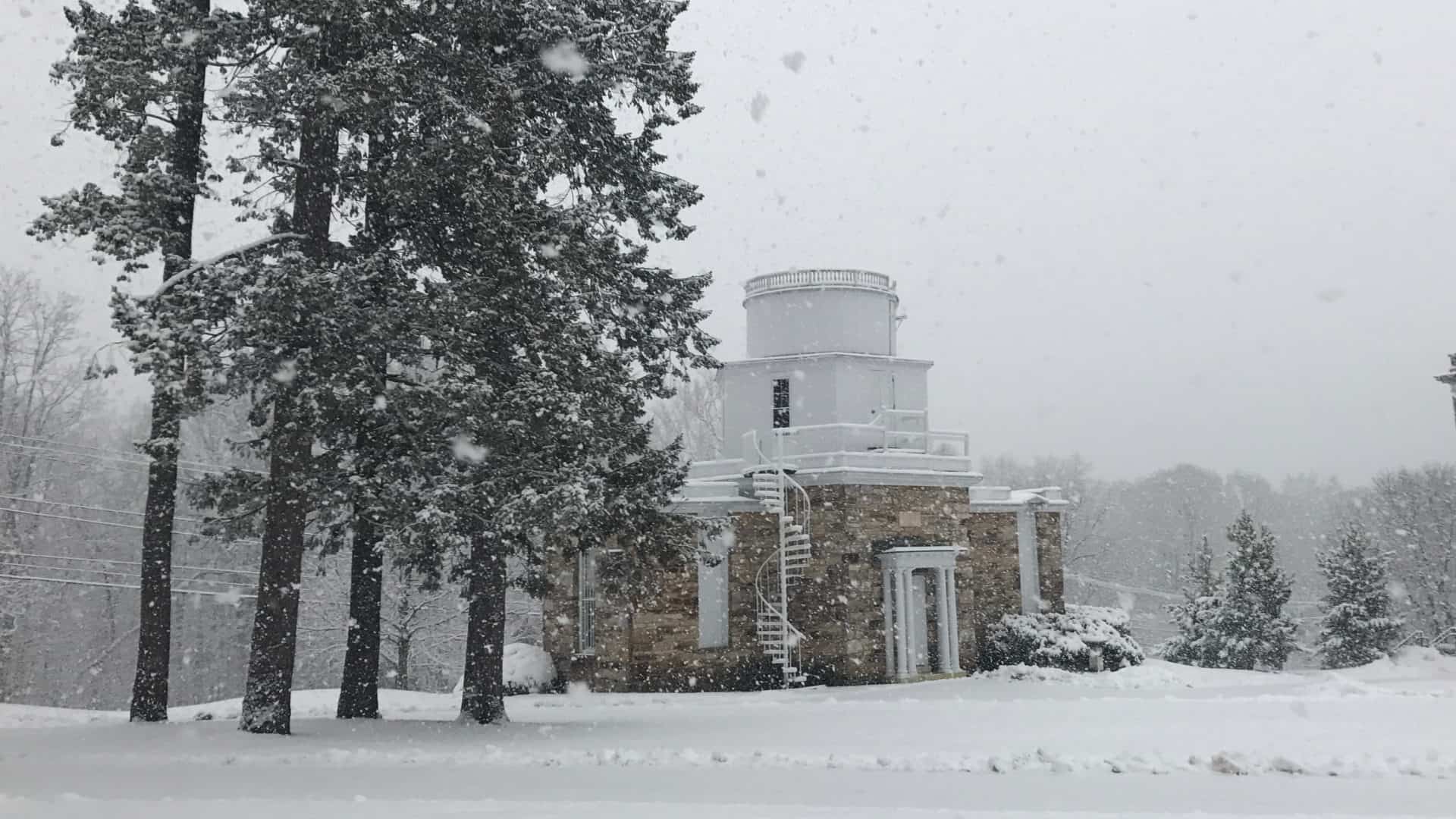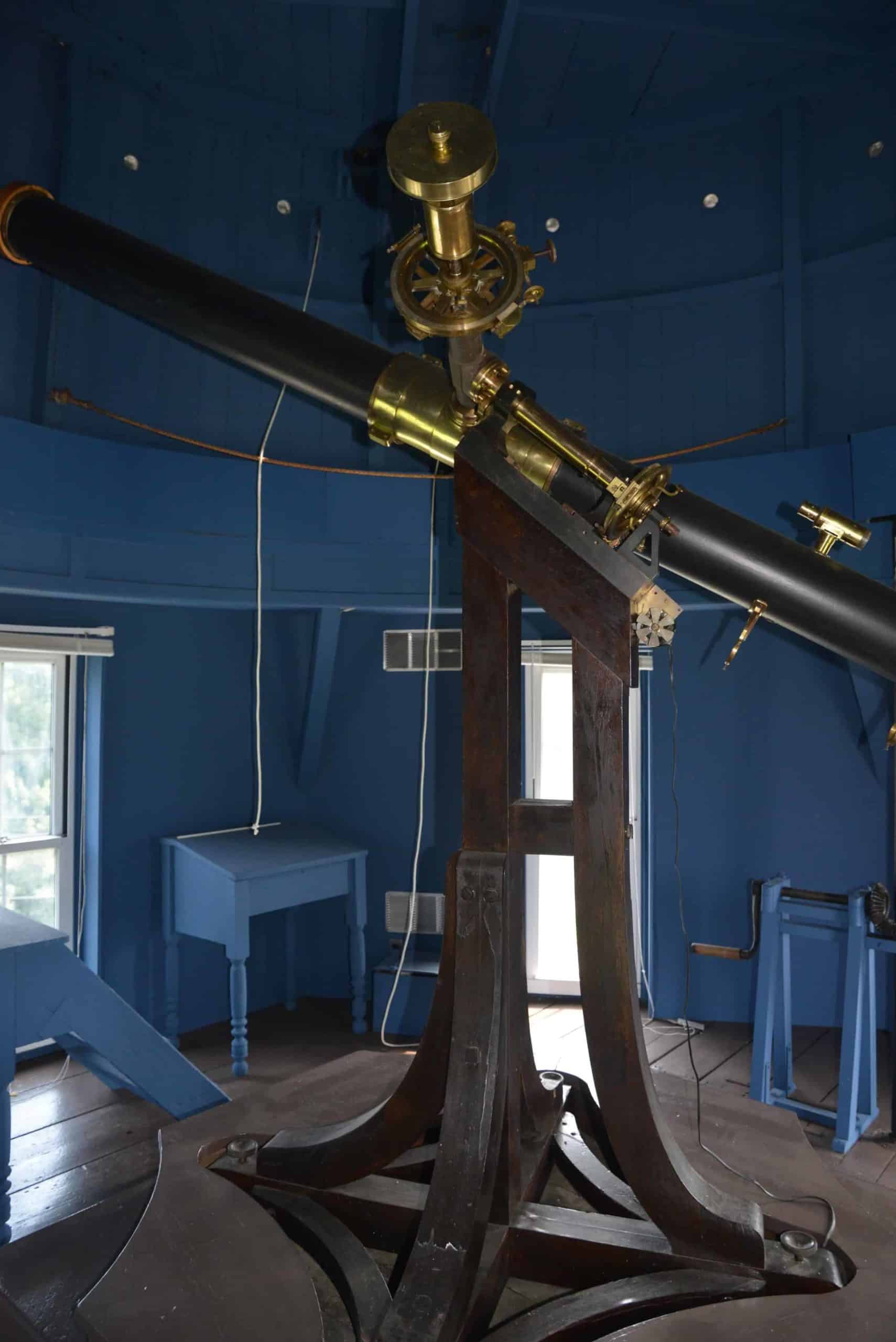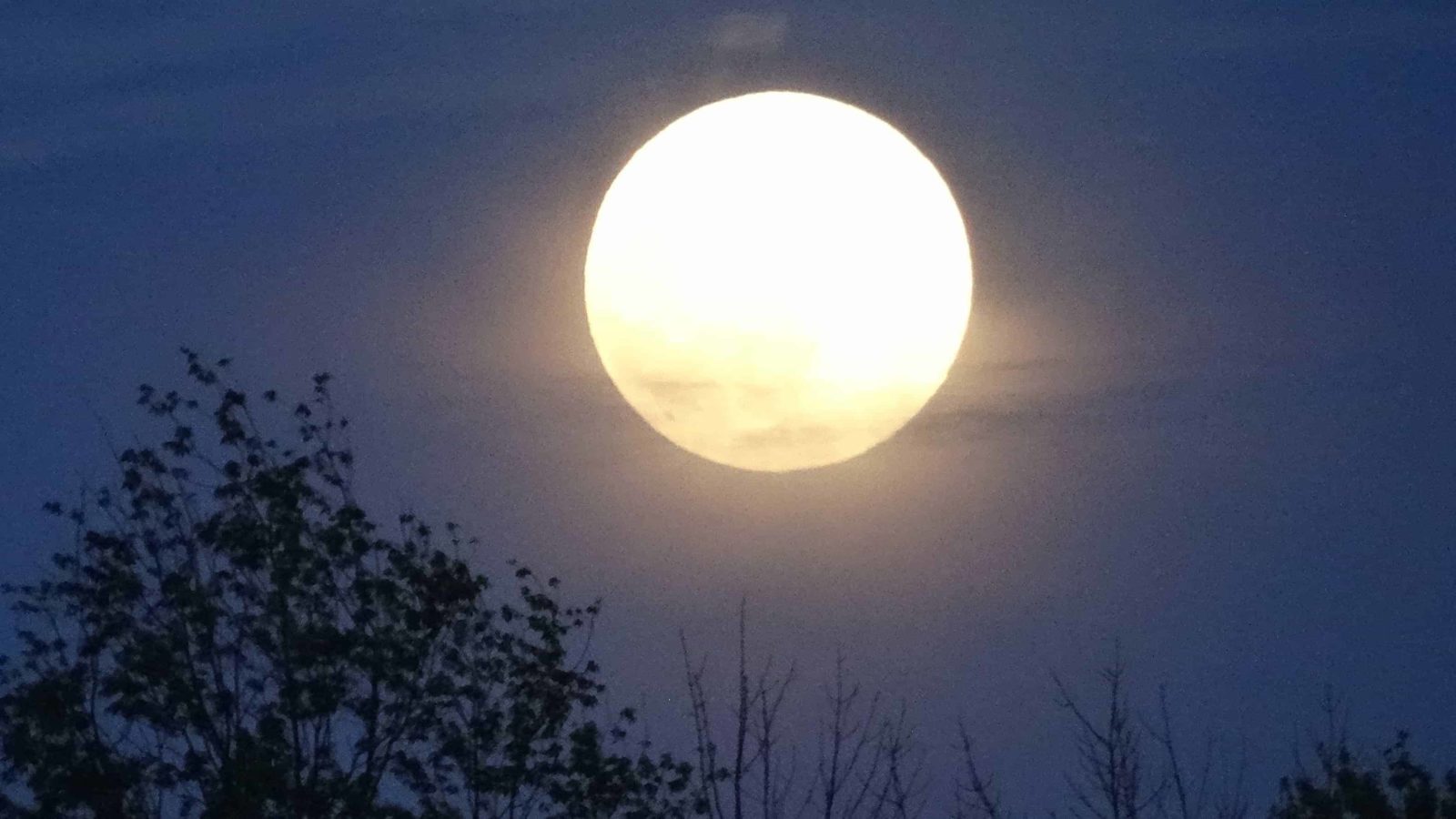The sky never gets dark in Washington D.C. Growing up, Rebecca Durst would tug her father onto the sidewalk to look for the five stars bright enough to show against the city lights. Two years ago she went to New Zealand to observe Pluto’s shadow in starlight.
In the summer after her Sophomore year at Williams College, she joined Williams astronomer and professor of astronomy Jay Pasachoff, Williams physicist Bryce Babcock and Christina Seeger ’16 and an MIT team of scientists to measure Pluto’s atmosphere.
This semester, as a senior and a math major, she is leading a team of five TAs in giving tours of the sky.

Snow falls on Hopkins Observatory, the old planetarium at Williams College.
On Friday nights a group of people lean back to look up at the domed ceiling of the oldest observatory in the United States. The night sky projected above them is darker than any night sky they will see, Durst said, except in the desert in central Australia. The people living there can see the pale band of the Milky Way more clearly than it ever appears here, clearly enough to see dark openings in the swirling arm of the galaxy.
The Aboriginal Australians navigate constellations by those patches of darkness, Durst said, and they have named the stars for elements of their own world. The ancient Greeks have a swan flying in their constellations — the Australians have an Emu.
Her talk in the Milham Planetarium began with the sky as it would look above Williamstown on an impossibly clear day. At the top of the wall, a ring of hand-painted mountains showed the outline of the Berkshire hills against the reflected sky.

Williams College's 19th-century Alvan Clark telescope. Image courtesy of Professor Jay Pasachoff
A planetarium projects images of the sky overhead, she explained. But this building began as the Hopkins Observatory, a place for looking at the real night sky.
In 1834, Albert Hopkins went to England to search for astronomical equipment. He was a professor of mathematics and natural philosophy at the college and brother of Mark Hopkins (the intellectual who gave the Log, the pub on Spring Street, its name. President James Garfield is said to have said: “The ideal college is Mark Hopkins on one end of a log and a student on the other.”)
Albert Hopkins came back with a telescope and other tools. The transit he brought is on display here, a telescope used to precisely measure the positions of stars.
Mapping the positions of stars was central in astronomy at the time, Pasachoff said in a phone interview. 19th-century astronomers used to a transit to measure the movements of stars as they passed through the zenith, the point directly overhead.
Hopkins got students to build the observatory by hand to house the first telescope and give talks in a round room with stars painted on the ceiling.
Technology has imporved since then. In 1852, the college commissioned a 7-inch refracting telescope — a telescope with a lens — from Alvan Clark. That commission let Clark set up his own telescope-making company, Durst said, and he would later make the largest refracting telescope in the world.
Williams still has the Clark telescope and keeps it in condition, but it is a museum piece, Pasachoff said. But the planetarium is 21st-century. It has had projectors since the 1960s, and in 2005 it upgraded to a Zeiss Skymaster ZKP3/B.
‘It looks like a freeze ray from Batman and Robin.’ — Rebecca Durst on the planetarium’s Zeiss Skymaster ZKP3/B projector.
“It looks like a freeze ray from Batman and Robin,” Durst said with affection, awed that she gets to use the same kind of projector as the Hayden Planetarium at the American Museum of Natural History in New York City.
On clear nights, after the show, visitors can also see the observatory on the roof of the Thompson Physical Laboratory where Williams students do their own research on top-of-the-line contemporary equipment including a 24-inch telescope with an imaging camera, a spectrograph, and refractors for wide field imaging, planetary imaging and observing.
And on a cloudy evening people can still look up at the Planetarium sky to find Algol, a star in the constellation of Perseus. For the Greeks, Algol represented the head of Medusa, Durst said. The star changes brightness rapidly and has caught people’s eyes for centuries.
Looking at the same region of sky, she pointed to Andromeda, the constellation named for the woman Perseus rescues from a sea monster in the myth. In the same area of the sky she showed the light-smudge of the Andromeda Galaxy, which is hurtling toward the Milky Way — and will get here in 3 million years.
The light of the Andromeda that appears in the sky tonight has been traveling 2.5 million years to reach eyes on earth.
Andromeda is the nearest major galaxy to the Milky Way, Durst said. It is 2.5 million light years from earth. A light year is the distance light travels (in space) in a year — and that means the light of the Andromeda that appears in the sky tonight has been traveling 2.5 million years to reach eyes on earth.
Fourteen years ago, in their walks through the city at night, Durst’s father told her that looking at the stars was the closest she would ever come to time travel. That thought kept her looking up. And years later, watching the shadow of Pluto fall in another hemisphere, she understands what he meant.
This story first ran in the Berkshire Eagle — my thanks to features editor Lindsey Hollenbaugh.

